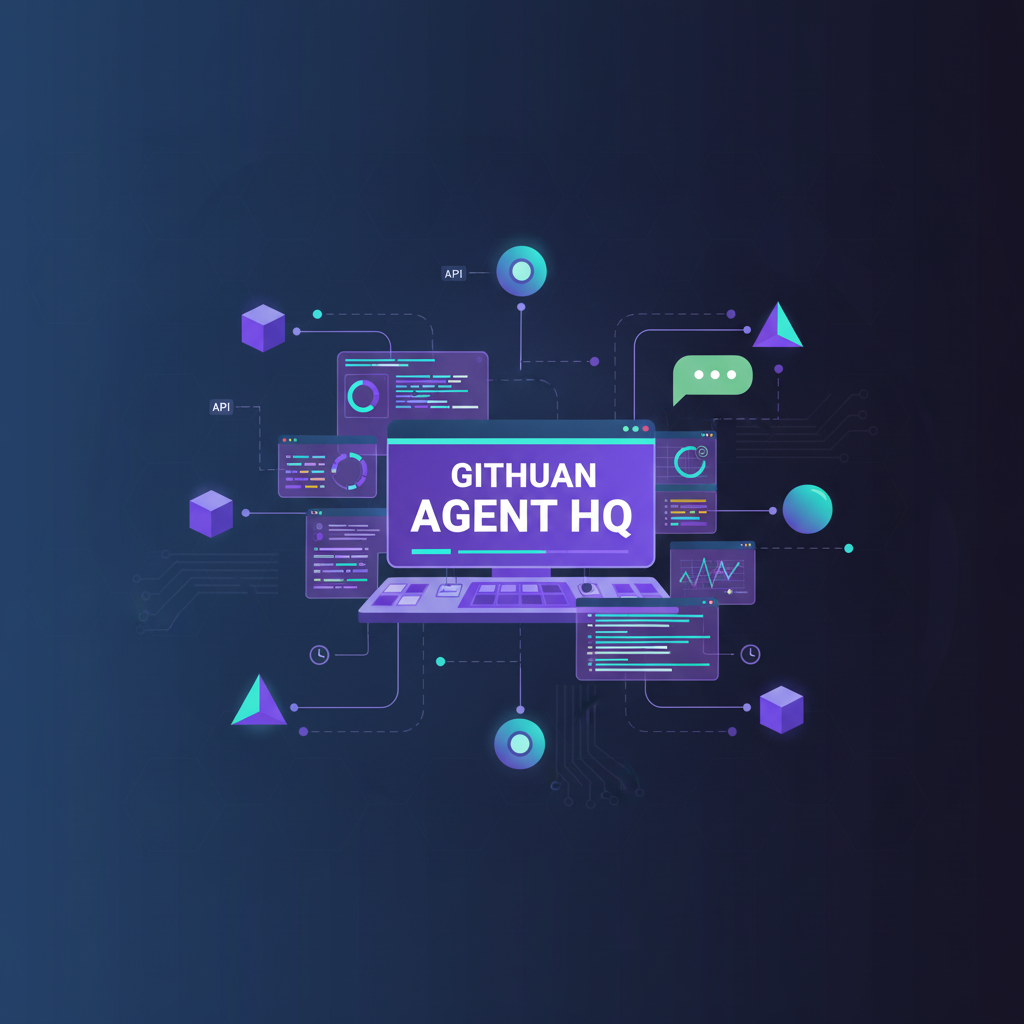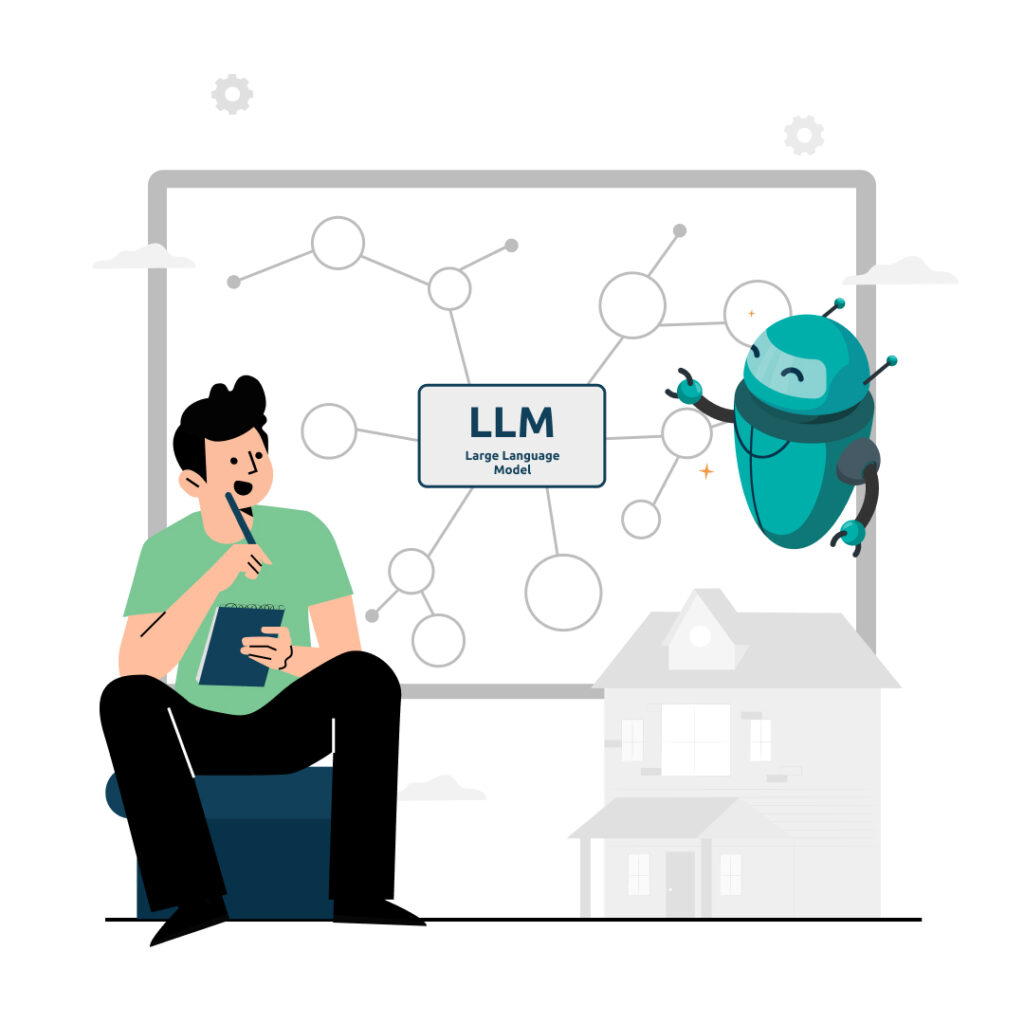Give a single AI agent a contained task and it will do a great job. Ask it to complete a function, review a piece of code, or suggest optimisations and you’ll get good results. But hand that same agent a complex problem requiring planning, implementation, testing, and review? It struggles.
Context switching across multiple domains trips up even sophisticated models. They’re generalists trying to be specialists in every domain at once.
Multi-agent orchestration solves this by coordinating multiple specialised agents, each focused on their core strength. You’ve got a planning agent handling architecture decisions. Coding agents implementing specific modules. Review agents validating quality. And an orchestration layer that manages task assignment, communication, and conflict resolution across this team. As part of our understanding AI agents and autonomous systems guide, we explore how orchestration delivers value at enterprise scale.
GitHub showed this approach in action on October 28, 2025, when they announced Agent HQ. It’s their “mission control” for coordinating multiple coding agents through a unified platform. You specify an end goal, and orchestration handles the agent coordination automatically.
But here’s the key question: when does adding orchestration complexity actually deliver value versus introducing unnecessary overhead?
This article explains how multi-agent orchestration works, provides a decision framework for single versus multi-agent choices, and reviews GitHub Agent HQ as a primary implementation example. Understanding orchestration lets you leverage autonomous agent specialisation for enterprise-scale development workflows.
What is Multi-Agent Orchestration and Why Does It Matter?
Multi-agent orchestration is the coordination layer that manages task assignment, communication, and conflict resolution across multiple AI agents working toward shared objectives.
Unlike single monolithic agents that handle all tasks internally, multi-agent systems distribute work to specialists. Planning agents focus on architecture. Coding agents focus on implementation. Review agents focus on quality. Each optimised for a narrow domain. The orchestration platform then synthesises their outputs into coherent solutions. For foundational context on how individual agents work, see our guide on AI agent fundamentals and distinguishing real autonomy from agent washing.
This solves three problems that single agents struggle with.
Task decomposition—breaking complex work into agent-appropriate pieces. Agent communication—enabling information flow between agents so planning agent output becomes coding agent input. Result aggregation—combining agent outputs without conflicts or contradictions.
Enterprise systems benefit from orchestration when problems require expertise across multiple domains simultaneously. When your development task needs deep specialist knowledge in planning, coding, testing, and review all at once, distributed specialists outperform centralised reasoning.
GitHub Agent HQ shows this approach in practice. It coordinates specialised agents for code planning, implementation, review, and testing within a unified control plane. You’re not manually prompting different tools and managing the workflow yourself. The platform handles it.
Orchestration also enables scalability. It distributes workload across agents rather than overloading a single reasoning engine.
Cost-efficiency emerges when specialised agents require fewer tokens than a single generalist handling the full problem scope. The generalist churns through tokens trying to maintain context across planning, coding, testing, and review. Specialists only consume tokens for their domain. If orchestration overhead is lower than the token savings from specialisation—and for complex workflows it usually is—you come out ahead.
When Should You Choose Multi-Agent Over Single-Agent Systems?
Multi-agent systems add complexity. An orchestration layer. Communication overhead. Conflict resolution logic. Single agents avoid all of this.
Wrong assumption to avoid: more agents always solve problems better. Orchestration overhead can exceed benefits for simple, contained problems. Don’t fall for technology-first thinking without a clear ROI framework.
Your decision framework needs to consider four factors.
Problem complexity. Does task decomposition actually benefit accuracy? If breaking the problem into specialist chunks produces better results than a single pass, orchestration has a case. If not, you’re adding overhead for no gain.
Specialisation value. Are dedicated agents demonstrably better than generalists? Run a test. Take a coding task requiring planning, implementation, and review. Compare single-agent results against coordinated specialist results. If quality improves meaningfully, specialisation adds value.
Cost implications. Does orchestration save enough to offset coordination overhead? Calculate token usage for the single-agent approach. Then calculate token usage for multiple specialists plus orchestration logic. The latter needs to be lower for multi-agent to make economic sense.
Team maturity. Can your engineering team manage a distributed system? Orchestration platforms handle much of the complexity, but you still need people who understand how multi-agent systems behave when things go wrong.
Single agent suffices when the problem fits within one expert’s reasoning window, when the task requires seamless context flow without handoffs, when cost sensitivity dominates, or when your team lacks orchestration experience.
Multi-agent systems justify their complexity when the problem naturally decomposes into specialist domains, when parallel execution provides meaningful time savings, when the orchestration platform handles coordination transparently, and when specialised agents demonstrably outperform single generalists.
GitHub Copilot and GitHub Agent HQ show this distinction clearly. Copilot is a single agent, and it excels at individual coding tasks. You prompt it, it responds, you iterate. Agent HQ coordinates planning, implementation, and review cycles across multiple specialised agents. For code completion, Copilot excels. For modernising an entire Java application, coordinated specialists deliver better results.
The threshold appears when single agents struggle with task handoff, context loss, or breadth-depth tradeoffs. If you find yourself repeatedly prompting an agent to switch between planning mode and implementation mode and review mode, you’re doing manual orchestration. Might as well automate it.
What Architectural Patterns Enable Multi-Agent Coordination?
Three main patterns enable coordination.
The hierarchical supervisor pattern puts a central supervisor agent in charge. It routes tasks to worker agents and aggregates results. This mirrors organisational structure—you’ve got a manager delegating to team members. GitHub Agent HQ uses this model. The supervisor routes tasks to planning agents, coding agents, testing agents, then synthesises results.
The supervisor pattern provides clear control and centralised oversight. The tradeoff is the supervisor becomes a potential bottleneck. All work flows through one coordination point.
Peer-to-peer collaboration takes a different approach. Agents coordinate directly without a central supervisor. Each proposes actions, and the group reaches consensus. This enables resilience because there’s no single point of failure. The tradeoff is you need sophisticated consensus mechanisms. Agents must agree on priorities, resolve conflicts, and maintain consistency without a central authority.
The collaborative workflow pattern chains agents sequentially. Planner hands off to implementer, who hands off to reviewer. Explicit handoff points make this simple to understand and debug. The tradeoff is you lose parallel execution benefits.
Pattern choice depends on your problem structure. Is there a natural hierarchy? Use supervisor pattern. Need horizontal scaling? Consider peer-to-peer. Can you afford sequential handoff delays? Workflow pattern might be simplest.
Monitoring differs by pattern. Supervisor pattern enables centralised oversight—you audit the supervisor’s decisions and you’ve covered the system. Peer-to-peer requires distributed consensus checking.
The orchestration system should log conflicts and resolutions regardless of pattern. You discover that coding agents and review agents consistently conflict on performance optimisation. That insight informs policy refinement. Maybe you need different acceptance criteria. Maybe you need a specialist performance agent breaking the tie.
How Does GitHub Agent HQ Coordinate Multiple Coding Agents?
GitHub Agent HQ is multi-agent orchestration specifically designed for development workflows. It coordinates multiple coding agents, serving as “mission control” for autonomous system collaboration.
It uses the hierarchical supervisor pattern. The control plane receives development objectives, decomposes work into agent-appropriate tasks, routes those tasks to specialised agents, aggregates results, and provides governance oversight.
Task delegation flows like this. The control plane analyses your coding request and determines required agent skills. It routes to a planning agent for architecture decisions. That agent creates specifications. The control plane hands those specs to coding agents for implementation of specific modules. Finally, it escalates to a review agent for quality assessment.
Result aggregation is where orchestration earns its keep. Agent HQ collects outputs from specialised agents and validates consistency. Did coding agents create conflicting implementations? The aggregation layer catches this. It synthesises partial solutions into a cohesive codebase and flags conflicts for supervisor resolution.
Governance mechanisms matter for enterprise deployment. The central control plane logs all agent decisions, enables review of autonomous actions, provides policy enforcement, and maintains an audit trail for compliance. Want a rule that says “no production changes without review agent approval”? The governance layer enforces it.
Integration with GitHub’s ecosystem provides orchestration feedback loops. Version control, issue tracking, deployment systems all feed information back to the control plane.
What Enables Agent-to-Agent Communication in Orchestrated Systems?
Agents must exchange information without you playing telephone. Planning agent output becomes coding agent input. Coding agent output becomes test input. This needs to happen reliably, with structured data, without ambiguity.
Communication protocols provide standardised message formats enabling interoperability. Two protocols matter most.
Model Context Protocol, open-sourced by Anthropic, enables developers to build secure, two-way connections between data sources and AI-powered tools. It establishes shared context between agents. MCP is becoming the universal specification for agents to access external APIs, tools, and real-time data. Think of it as the USB-C of AI. Understanding security implications of these connections is critical—see our comprehensive guide on deploying AI agents securely with agentic security frameworks for detailed security architecture patterns.
MCP supports persistent memory, multi-tool workflows, and granular permissioning across sessions. Agents can chain tasks, reason over live systems, and interact with structured tools.
Agent-to-Agent protocol, developed by Google and open-sourced to the Linux Foundation, provides a common language for agents to discover capabilities, securely exchange information, and coordinate complex tasks. Over 100 companies have adopted it, with support from AWS, Cisco, Microsoft, and other partners.
The shared context layer prevents information loss during task handoff. All agents access common development context—codebase structure, requirements, constraints. When a planning agent creates an architecture specification, coding agents receive that full context, not a summary that might miss details.
Message format standardisation matters for practical deployment. Agents send structured task specifications, receive results in consistent formats, and communicate partial progress enabling parallel work. No ambiguous English instructions. Structured data with schemas.
Protocol standardisation also enables agents built on different frameworks to interoperate. If both support MCP or A2A, they can coordinate regardless of whether they’re sourced from different vendors. This reduces vendor lock-in at the agent level.
GitHub Agent HQ likely supports these standard protocols, enabling integration of third-party agents beyond native GitHub-built agents. Want to integrate a specialised code analysis agent from another vendor? As long as it speaks MCP or A2A, the orchestration platform can coordinate it.
How Does Orchestration Handle Agent Conflicts and Disagreements?
Conflicts happen. Coding agents propose incompatible implementations. Testing agents disagree on pass-fail criteria. Review agents identify policy violations.
Resolution mechanisms provide options.
Voting is straightforward. Agents vote on the best solution. Majority wins. Simple, democratic, sometimes wrong when the majority lacks context the minority possesses.
Consensus protocols require agents to negotiate until they reach agreement. This approach demands sophistication but produces stronger buy-in. When agents must justify their positions and respond to counterarguments, better solutions often emerge.
Supervisor override puts the orchestration platform or a human in charge. When agents can’t agree, escalate to an authority with broader context.
Policy-based routing lets rules determine outcomes without negotiation. If two agents disagree about whether to optimise for performance or readability, a policy saying “readability wins unless performance degrades by more than 20 percent” resolves it automatically.
Escalation patterns create fallback layers. The platform attempts automated resolution first. If that fails, escalate to the policy engine. If policy doesn’t cover the scenario, escalate to a human decision-maker.
Governance is critical here. Conflict resolution enforcement embedded in the orchestration platform ensures autonomous systems stay within acceptable parameters. This builds stakeholder trust in autonomous decisions.
There’s a learning opportunity in logged conflicts. The orchestration system captures conflicts and resolutions, enabling pattern recognition. You discover systematic disagreements between specific agent types. That insight informs policy refinement and potentially new specialist agents to address the gaps.
Conflict resolution prevents contradictory actions. Imagine a rollback agent undoing a change while a coding agent is still building on it. Conflict detection and resolution prevent this.
What Are the Key Implementation Requirements for Orchestrating Agents?
Several architectural and infrastructure elements enable the coordination layer.
Agent SDK provides the foundation. Developers build agents using SDK framework. The orchestration platform discovers agent capabilities through the SDK interface and manages agent lifecycle—startup, task assignment, shutdown, failure recovery. When choosing which platform supports your SDK strategy, consult our guide on evaluating AI agent orchestration tools for enterprise development for detailed vendor comparison and selection frameworks.
Deployment infrastructure requires accessible environments. Agents run on cloud services or dedicated servers. The orchestration platform coordinates workload distribution across agent instances. This means container orchestration, load balancing, and scaling policies.
Monitoring and governance infrastructure captures decisions. Logging systems record all agent actions. Policy engines enforce constraints. Audit systems enable compliance demonstration when regulators or customers ask “how did your autonomous system make this decision?”
Integration points with existing systems matter for practical deployment. Orchestration platforms connect to version control, issue tracking, deployment pipelines. These connections enable orchestration loops with real development workflows. Agents commit code, tests run, results feed back to agents, agents respond to failures.
Security considerations require attention. Orchestration platforms control agent permissions—what code can agents modify? Role-based access determines which agents can deploy to production. Isolation between agents prevents one compromised agent from affecting others.
Performance optimisation handles edge cases. Orchestration manages timeout scenarios. What happens if an agent hangs? Token usage needs distribution to avoid overloading a single reasoning engine. Parallel execution capabilities enable multiple agents to work simultaneously rather than queuing.
Orchestration governance framework defines acceptable agent behaviour. Policies specify limits on autonomous actions. Which changes require human approval? Escalation rules handle high-risk decisions. Agentic systems can trigger financial transactions, access sensitive data, or interact with external stakeholders, making them attack surfaces and regulatory liabilities.
Governance for agentic systems remains immature. Your implementation needs to account for this by building governance frameworks that can adapt as best practices emerge.
Data and infrastructure readiness precede deployment. Organisations need data governance, ownership models, lineage tracking, and standardised APIs. Without these foundations, orchestration platforms lack the context agents need to make informed decisions.
Change management remains overlooked. Employees wary of automation, unfamiliar with AI systems, or threatened by job displacement resist adoption. Your orchestration implementation needs stakeholder buy-in, training programmes, and clear communication about how autonomous agents augment rather than replace human judgement.
Frequently Asked Questions
What is the difference between a single AI agent and a multi-agent system?
Single agents excel at individual, contained tasks but struggle with complex problem decomposition and context switching. Multi-agent systems distribute work across specialists—each agent optimised for a narrow domain, working together through orchestration to solve problems exceeding individual agent capability. For more on how individual agents work and when to choose orchestration, see our article on AI agent fundamentals.
When is multi-agent orchestration overkill?
When problems fit within a single agent’s reasoning window, when tasks require seamless context flow, when your engineering team lacks orchestration experience, or when cost sensitivity dominates. Simple, contained problems are often better served by a single agent than orchestration overhead.
How does GitHub Agent HQ differ from GitHub Copilot?
GitHub Copilot is a single AI coding assistant excelling at individual coding tasks. GitHub Agent HQ is a multi-agent orchestration platform coordinating multiple specialised agents for complete development workflows—planning, coding, testing, review—providing unified control for autonomous system collaboration.
What communication protocols enable agent coordination?
Model Context Protocol and Agent-to-Agent protocols establish standardised message formats and shared context, enabling agents built on different frameworks to interoperate without vendor lock-in. These protocols are necessary for orchestration platforms to coordinate agents from various sources.
Can agents in an orchestrated system disagree with each other?
Yes. Conflicts emerge when agents propose incompatible solutions. Orchestration platforms resolve conflicts through voting, consensus protocols, policy-based rules, or escalation to human decision-makers. These conflict resolution mechanisms enable governance and prevent contradictory autonomous actions.
What happens if an agent fails during orchestrated execution?
Orchestration platforms detect failure through timeouts or error responses, escalate affected tasks to different agents or human handlers, log failures for audit trails, and adjust strategy. Resilience depends on pattern choice—supervisor pattern enables centralised failure management while peer-to-peer requires distributed resilience.
Is orchestration platform vendor lock-in a risk?
Not inherently. Standardised communication protocols enable agent interoperability across platforms. Agents built to standard protocols can integrate with multiple orchestration platforms. Vendor lock-in risk exists at the orchestration platform level—GitHub Agent HQ versus alternatives—but not at the agent level if you use standard protocols.
How do orchestrated agents maintain security and governance?
Orchestration platforms enforce policies limiting autonomous actions, manage agent permissions controlling what code agents can modify, maintain role-based access determining which agents can deploy to production, log all decisions for audit, and escalate high-risk changes to human approval gates. Governance is embedded in the platform itself.
What are the cost implications of moving from single agent to multi-agent orchestration?
Costs shift from single reasoning engines with expensive token usage for solving everything to distributed agents with more efficient token usage for specialised problems, plus orchestration overhead for coordination logic and governance infrastructure. ROI becomes positive when specialisation token savings exceed orchestration costs—typically true for complex development workflows.
Can I use third-party agents within GitHub Agent HQ?
If third-party agents support standard protocols and appropriate SDKs, yes. Orchestration platforms are agnostic to agent source if interoperability standards are met. This enables composition of best-of-breed agents rather than vendor-specific ecosystem lock-in.
What’s the difference between supervisor and peer-to-peer orchestration patterns?
Supervisor pattern uses a central agent to route tasks to workers and aggregate results, mirroring organisational structure, enabling clear oversight, but creating a potential bottleneck. Peer-to-peer has agents coordinate directly without a central supervisor, scaling horizontally but requiring consensus mechanisms. Pattern choice depends on problem structure and scalability needs.
How does orchestration improve over repeatedly prompting a single agent?
Orchestration automates task decomposition, determining which agent handles what, eliminates manual context passing by managing shared context automatically, enables parallel execution with multiple agents working simultaneously, and maintains governance through policy enforcement, conflict resolution, and audit trails. Manual iteration requires human orchestration effort and loses parallelisation benefits.
Moving from Understanding to Implementation
Multi-agent orchestration moves from theoretical concept to practical competitive advantage when you have a clear deployment strategy. You understand the patterns, the communication protocols, the conflict resolution approaches. Now comes implementation.
For step-by-step guidance on deploying orchestrated agent systems in your production environment, read our comprehensive article on enterprise implementation and deploying AI agent systems in production safely. It covers the infrastructure, security, and reliability patterns necessary to move from planning to operation.
For a broader overview of AI agents and how multi-agent orchestration fits into the larger agent ecosystem, return to our guide on understanding AI agents and autonomous systems.












